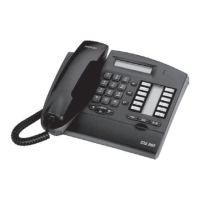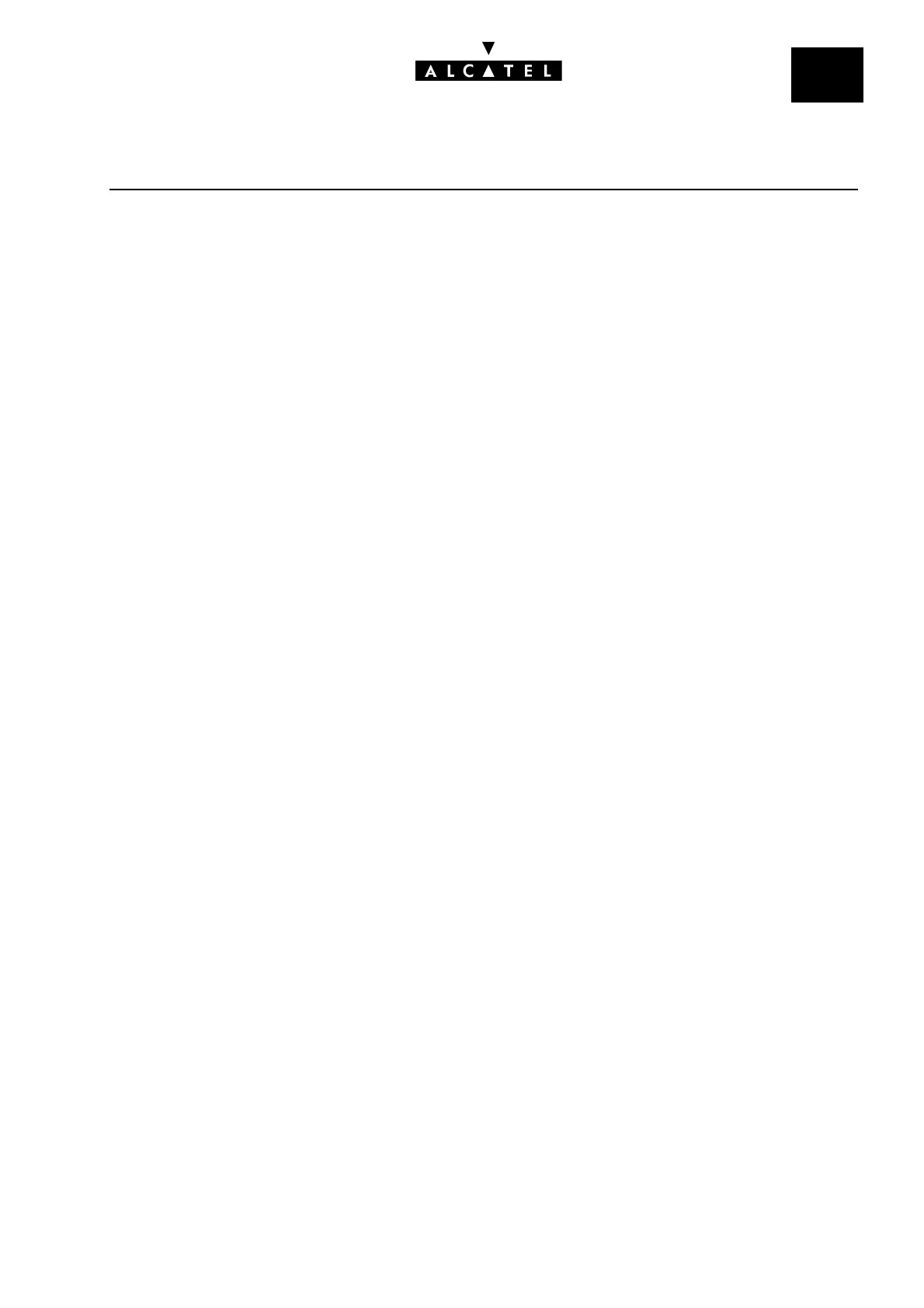File
3
DIMENSIONING - LIMITSCALL SERVER : VOICE ON IP
Ed. 04 5/8Réf. 3EH 21000 BSAA
Configuration examples
H.323 gateway only
- 1 Operator station (non-IP)
- 40 Reflexes stations (non-IP)
- 5 T0 accesses
- 6 VoIP network accesses (example: 2 to a site A with a bandwidth = 64 Kbps and 2 accesses to a
site B with a bandwidth = 64 Kbps plus 2 other channels for NetMeeting PCs).
As all the DSP channels are associated with the H.323 gateway (no IP telephony), the number of DSP
channels needed for this configuration corresponds to the number of VoIP accesses, i.e. 6 (increased
to 8).
Small IP Telephony configuration
- 1 Operator station (non-IP)
- 20 IP Enabler stations
- 3 T0 (=6 channels)
In this case the mean number of DSPs associated with the 20 IP Enablers is: A=12.
B = 6 - 0 + 1 = 7.
The mean number of DSPs needed for this configuration is: Min(12, 7) = 7 (increased to 8).
Large IP telephony configuration
- 1 Operator station (non-IP)
- 70 IP Enabler stations
- 1 T2 access with 30 channels
A = 29; B = 30 0 +3 = 33.
The mean number of DSPs needed for this configuration is: Min(29, 33) = 29 (increased to 32).
Mean configuration in mixed telephony: IP and conventional telephony
- 1 Operator station (non-IP)
- 25 IP Enabler stations
- 25 DECT stations
- 6 T0 accesses
A = 14; B = 12 -2 +1 = 11.
The mean number of DSPs needed for this configuration is: Min(14, 11) = 11 (increased to 16).
Mean configuration in mixed telephony: IP and conventional telephony
- 1 Operator station (non-IP)
- 5 IP Enabler stations
- 40 conventional Reflexes stations
- 6 T0 accesses
A = 5; B = 12 - 4 + 0 = 8.
The number of DSPs needed for this configuration is: Min(5, 8) = 5 (increased to 8).

